These vegan Singapore noodles are better than takeout and almost as easy! Made with crispy stir-fried rice noodles in curry sauce, veggies and pan-fried tofu, this flavorful dish might just be your new favorite weeknight dinner.
Sometimes the best things in life are the simplest! For example, Singapore noodles. Back when I first had a taste of this dish at an Asian fusion restaurant, I thought they were the most amazing thing I'd ever tasted. I wondered what could possibly go into this crazy delicious dish? (This was back in the days before Google provided all the answers.)
It wasn't until years later that I found out that the answer was so simple: rice noodles stir-fried in soy sauce in curry powder. Seriously, that was all? Pretty much!
Jump to:
What Are Singapore Noodles?
Well, there's a little more to it than that, but not much. Maybe a few extra, really easy to find, spices — my vegan Singapore noodles include turmeric for extra color and sriracha for heat. You'll usually find some aromatics, like garlic, ginger and scallions, stir-fried veggies, and maybe a protein, like the pan-fried tofu that's in this version.
Supposedly, Singapore noodles didn't actually originate in Singapore, but it's not really clear where they did come from. I always make a point of asking when I see the dish on a restaurant menu. I've been told by some folks that they're Chinese (just not as well known as classics like chow mein and lo mein), and then by others that they're not and nobody knows the real origin.
Since I always see them on the menu at Asian fusion places, I simply think of them as that — fusion cuisine.
What You'll Need
- Rice vermicelli noodles. Look for this in the international section of your supermarket. You can substitute wider rice noodles, such as pad Thai noodles, if you can't find them.
- Soy sauce. Gluten-free tamari or liquid aminos can be substituted if needed.
- Curry powder. Use your favorite curry powder here. I like to use a mix of mild and hot curry powders, but you can use all mild if you prefer (all hot would probably make for a very spicy dish, go for it if that's your thing).
- Turmeric.
- Sriracha sauce. Leave this out if you prefer a milder version of the recipe.
- Tofu. Super firm tofu works best in this recipe. You can use extra firm or firm tofu instead, but you'll need to press it first.
- Canola oil. Feel free to use another high-heat oil such as peanut or vegetable oil if you'd like.
- Scallions.
- Garlic.
- Fresh ginger.
- Bell peppers. We're using one red and one green pepper. You can absolutely substitute your favorite stir-fry veggies, keeping in mind that softer veggies cook quicker while harder ones take a few more minutes. Broccoli, baby corn, snow peas, and napa cabbage would all work well.
- Onion.
- Fresh cilantro. Leave this out if you're not a fan.
How to Make Vegan Singapore Noodles
The following is a detailed photo tutorial on how to make this dish. Scroll all the way down if you'd like to skip right to the recipe!
- Prep your veggies and sauce first. You'll want every ingredient to be ready to go into the skillet when you need it.
- Soak your noodles in hot water — this is the best way to soften up rice noodles for stir-frying. Don't boil them like you would wheat noodles! Rinse the noodles when they're done soaking and then drain them. Tip: Be sure to drain your noodles really well! There's nothing worse than ending up with too much water in the pan when you go to stir-fry them. I like to leave them sitting in the strainer after rinsing.
- Cook your tofu. Pan-fry diced tofu in a lightly oiled skillet over medium heat. Cook the pieces for a few minutes on each side, until they're crispy and golden. Then remove them from the skillet or wok. Need more guidance on this cooking method? Check out this guide to pan-frying tofu.
- Cook your aromatics. Add some more oil to the skillet and briefly sauté minced garlic, grated ginger, and just the white parts of your scallions. Just give them a minute to heat up and begin to release they're aromas.
- Stir-fry the vegetables. Turn up the heat before adding them to the skillet. Flip them frequently so they cook evenly. It should only take a couple of minutes for the onions to soften and the peppers to become tender-crisp.
- Add noodles, sauce, and cooked tofu to the skillet. I like to use a fork or a pair of tongs to separate the noodles and get them evenly coated with sauce. Stir-fry everything until the noodles begin to dry out and crisp up where they touch the skillet.
- Take your skillet off of the heat, and sprinkle your vegan Singapore noodles with cilantro and the green parts of your scallions. Dig in!
Leftovers & Storage
Leftover vegetarian Singapore noodles will keep in a sealed container in the fridge for about 3 days.
Frequently Asked Questions
Yup! Just use gluten-free tamari in place of soy sauce.
They are! I always recommend checking the ingredients to be on the safe side, but I've never come across a brand that wasn't vegan.
It depends, and it's really up to the cook! If you use a mild curry powder and omit the sriracha, these noodles will be super mild. Including sriracha and some hot curry powder will turn up the heat.
Tempeh or seitan would work well, or just leave it out and make veggie Singapore noodles!
More Vegan Noodle Recipes
Like this recipe? If so, be sure to follow me on Facebook, Pinterest or Instagram, or subscribe to my newsletter. And please stop back and leave me a review and rating below if you make it!
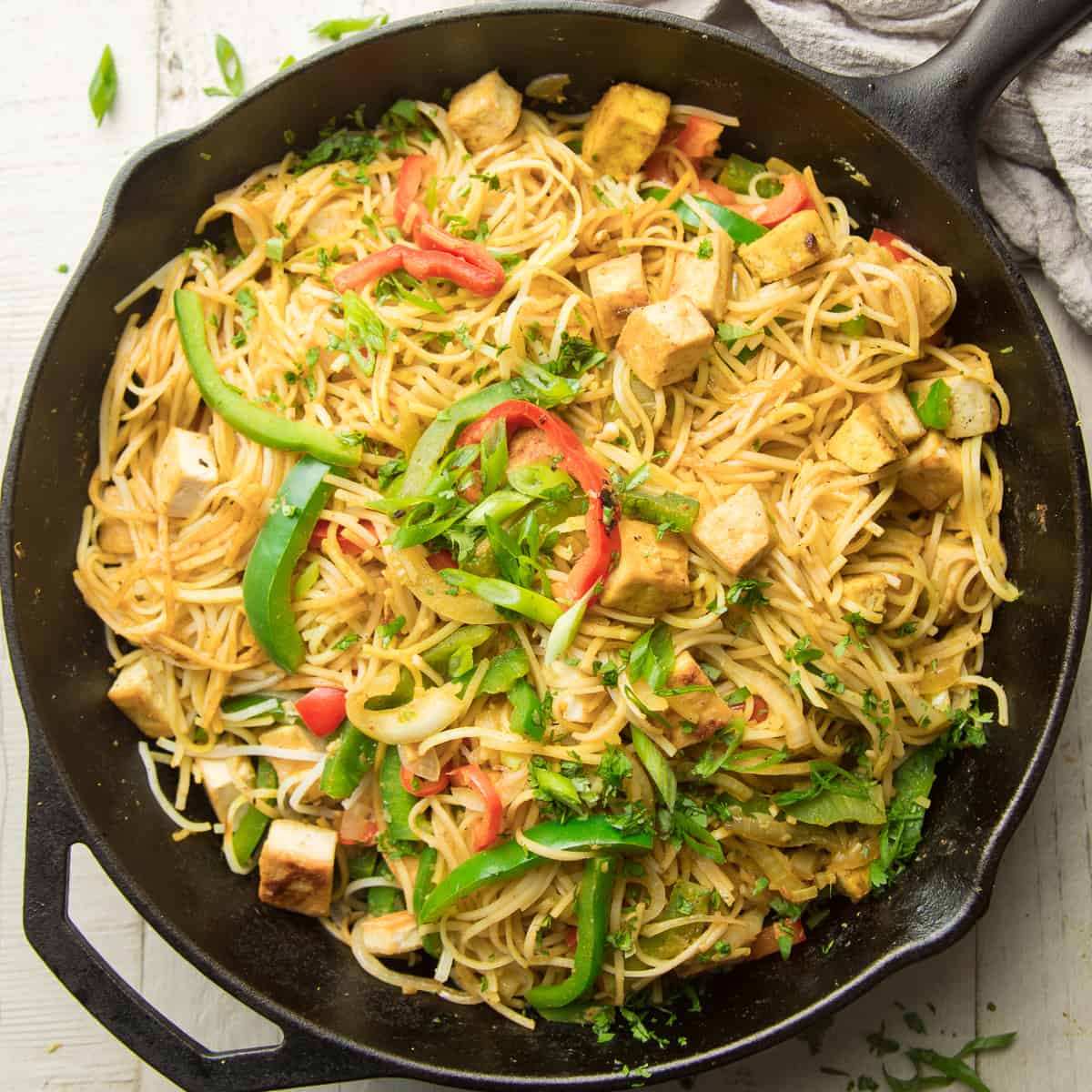
Vegan Singapore Noodles with Tofu
These vegan Singapore noodles are better than takeout and almost as easy! Made with crispy stir-fried rice noodles in curry sauce, veggies and pan-fried tofu, this flavorful dish might just be your new favorite weeknight dinner.
Ingredients
- 7 ounces vermicelli rice noodles
- 3 tablespoons soy sauce, plus more to taste
- 1 ½ tablespoons curry powder, plus more to taste*
- ½ teaspoon turmeric
- 1 teaspoon sriracha sauce, plus more to taste
- 1 (14 ounce or 400 gram) package super firm tofu, diced
- 2 tablespoons canola oil, or high heat oil of choice
- 4 scallions, white and green parts separated and chopped
- 3 garlic cloves, minced
- 1 ½ teaspoons freshly grated ginger
- 1 red bell pepper, sliced into strips
- 1 green bell pepper, sliced into strips
- ½ medium onion, sliced into half rings
- ¼ cup chopped fresh cilantro
Instructions
-
Bring a medium pot of water to a boil.
-
Remove the pot from the heat and add the noodles. Push them down to submerge them in the water. Allow the noodles to soak until they're softened — refer to the package directions to see how long this will take.
-
When the noodles have finished soaking, drain them into a mesh strainer then rinse them well with cold water. Let the noodles sit in the strainer to continue draining while you begin the stir-fry.
-
Stir the soy sauce, curry powder, turmeric, and sriracha together in a small bowl.
-
Coat the bottom of a large skillet with 1 tablespoon of oil and place it over medium heat.
-
Once the oil is hot, add the tofu in an even layer.
-
Cook the tofu for about 10 minutes, flipping it once or twice to achieve browning on multiple sides.
-
Remove the tofu from the skillet and transfer it to a plate.
-
Add the remaining tablespoon of oil to the skillet and give it a minute to heat up.
-
Add the white parts of the scallions, garlic, and ginger to the skillet. Cook them for about 1 minute, until very fragrant.
-
Raise the heat to high, then add the bell peppers and onions to the skillet.
-
Stir-fry the veggies for about 2 minutes, until the onions soften and the peppers become tender-crisp and brighten in color.
-
Add the noodles, soy sauce mixture, and cooked tofu to the skillet.
-
Continue to stir-fry everything, distributing the noodles and sauce with a fork, until the noodles begin to dry up and crisp in spots, about 2 minutes.
-
Remove the skillet from the heat and gently stir in the green parts of the scallions and cilantro.
-
Taste-test the noodles and adjust the seasonings to taste, adding more soy sauce, curry powder, or sriracha if desired.
-
Divide onto plates and serve.
Recipe Notes
*I like to use a mix of mild and hot curry powders — about 1 tablespoon mild and ½ tablespoon hot. Use a ratio that works for your taste!


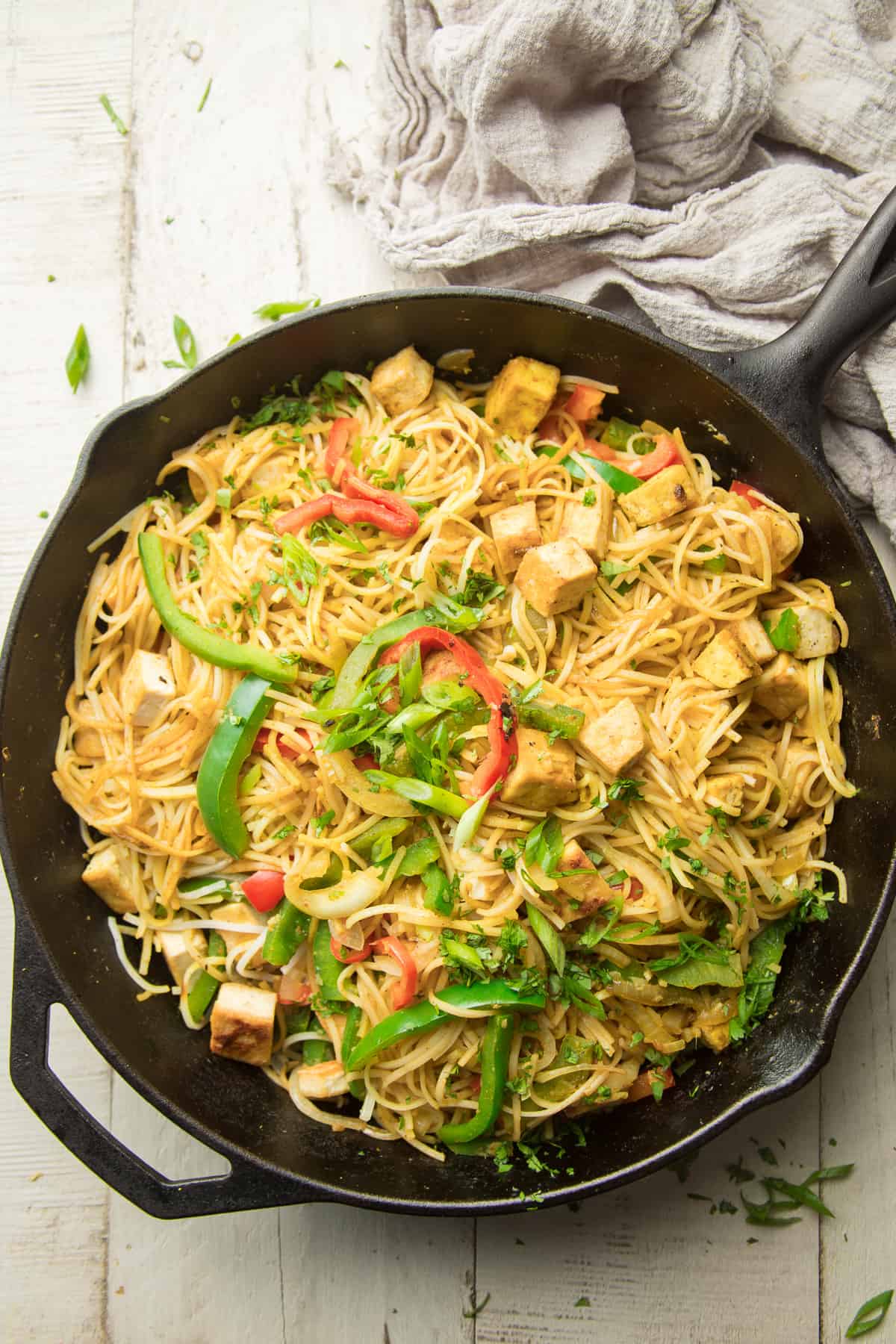
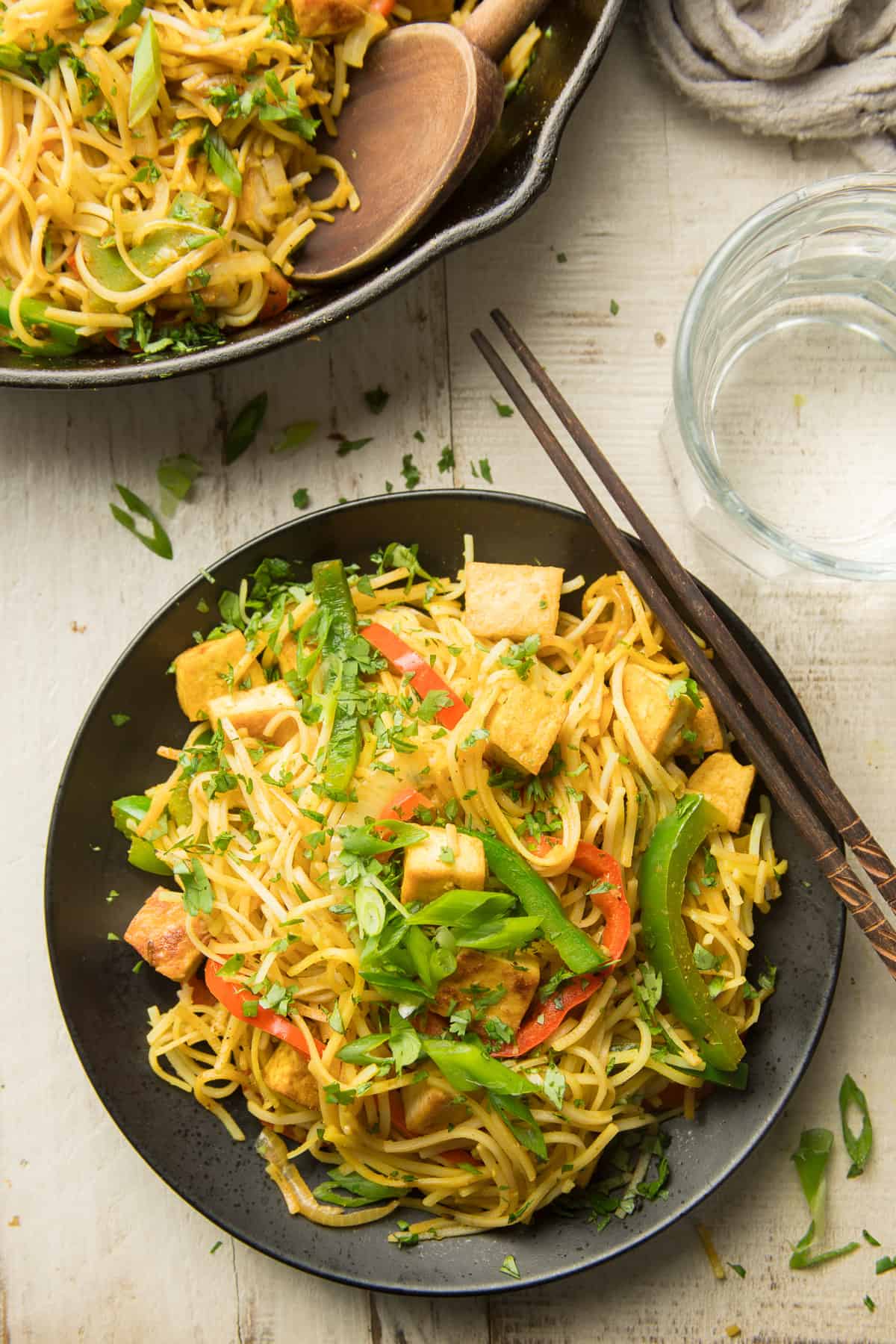

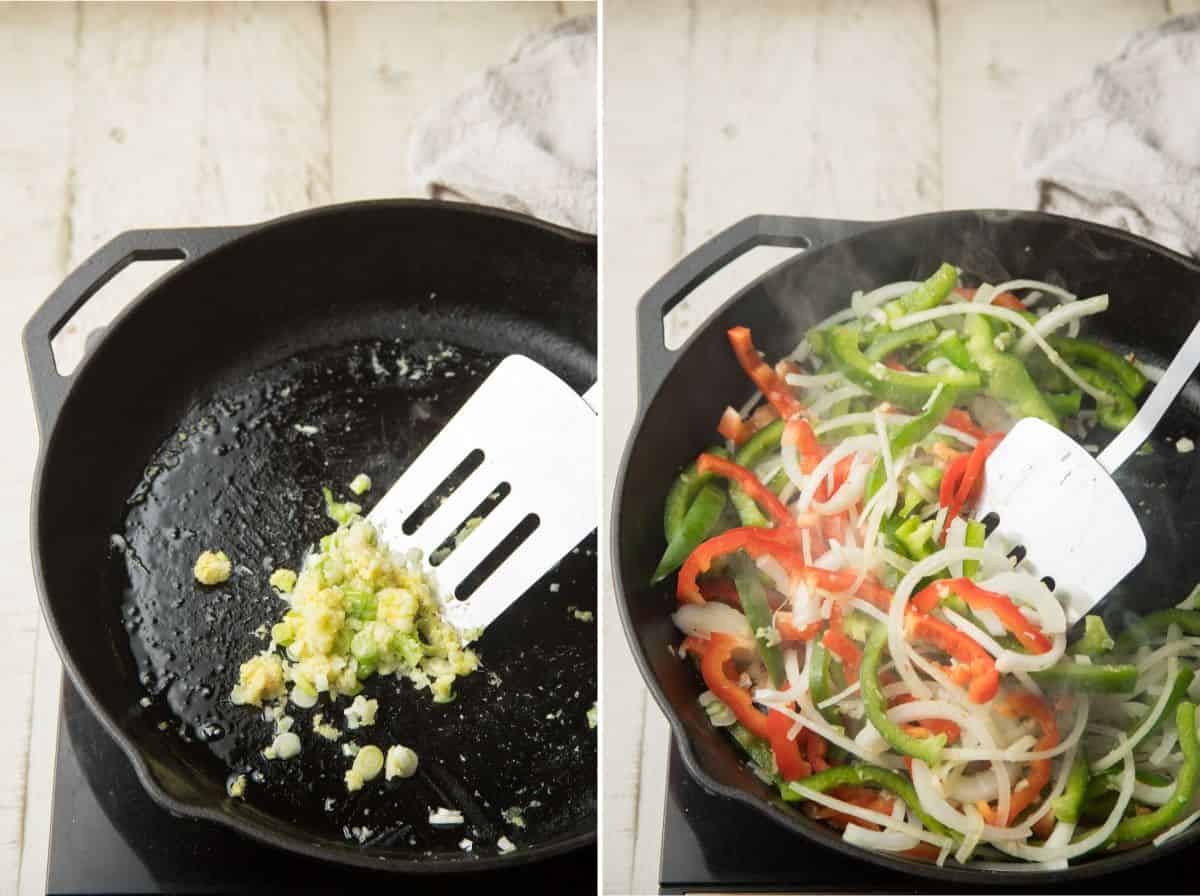
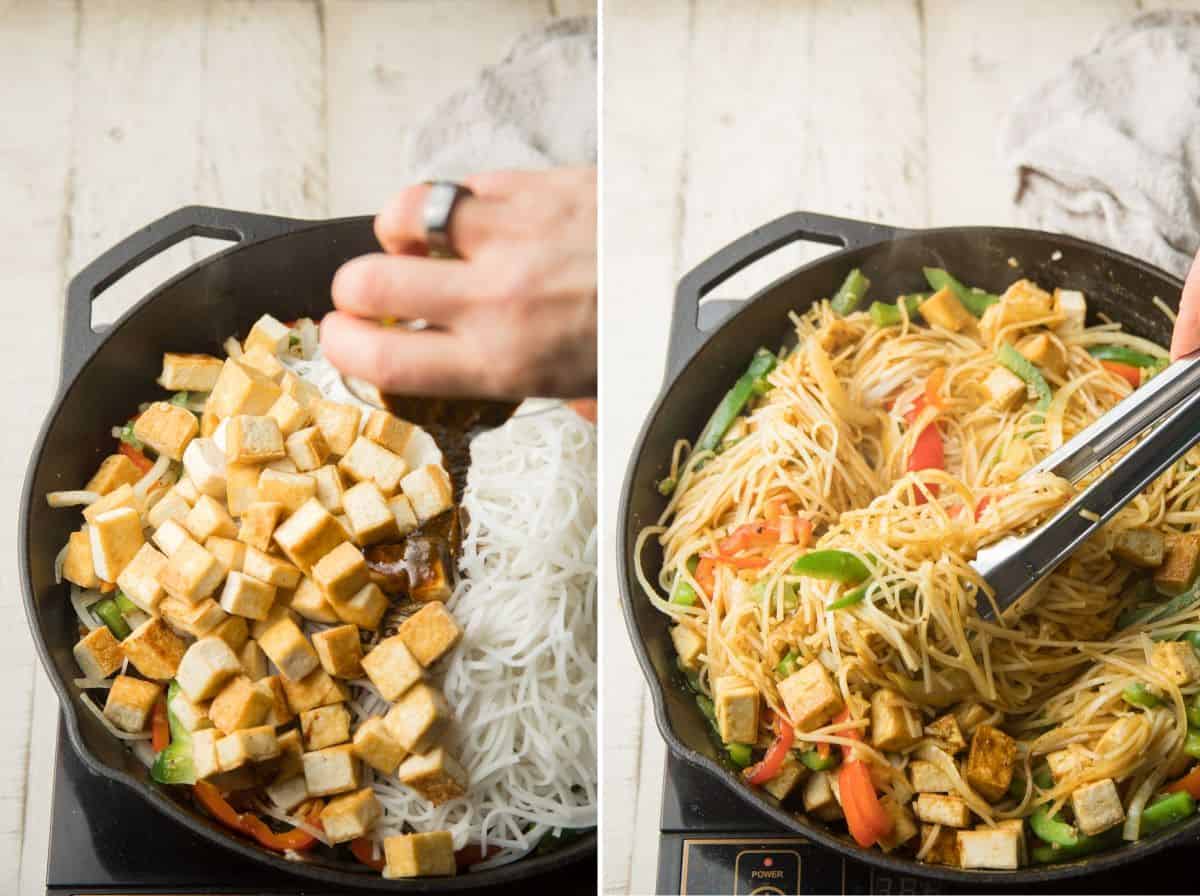
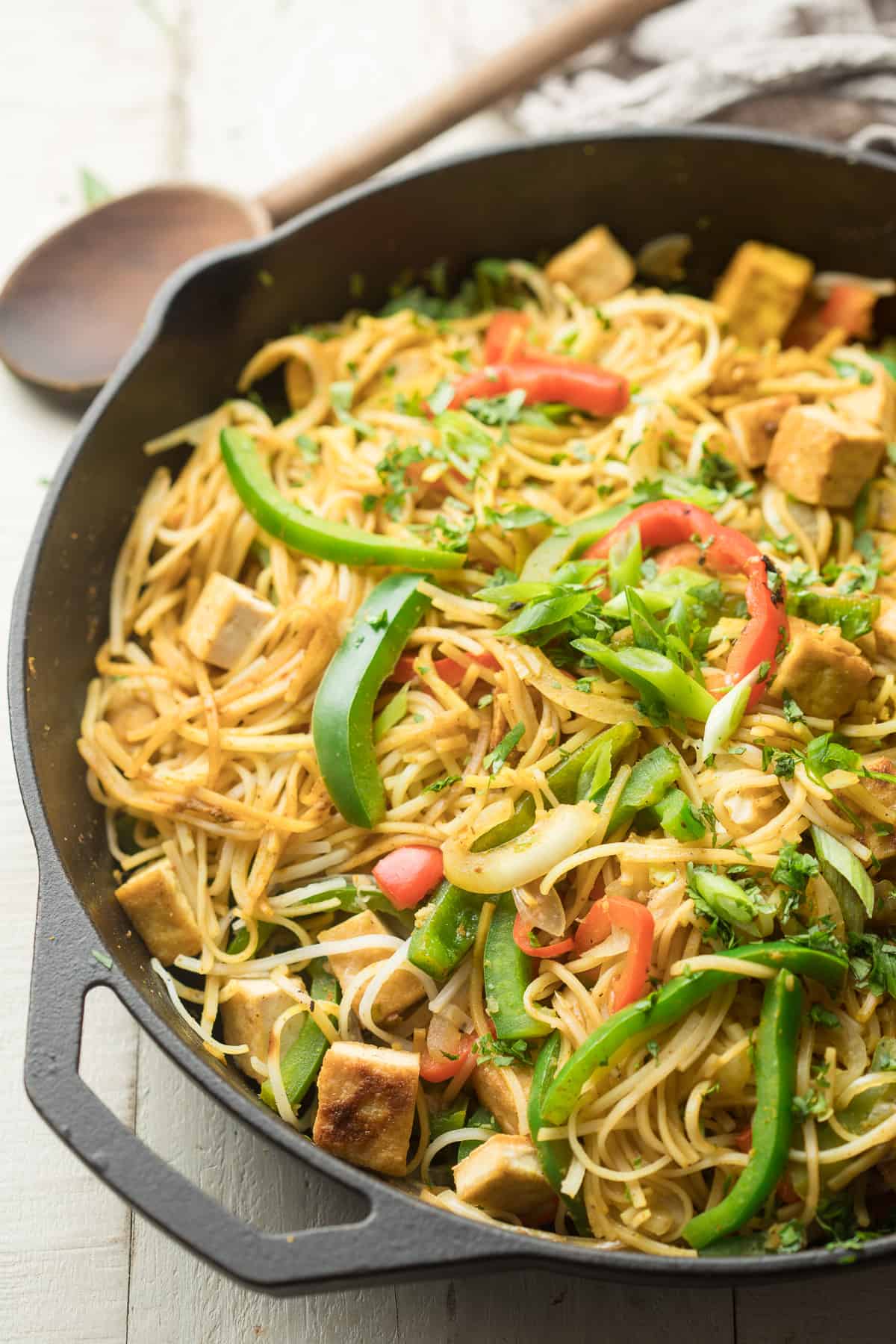
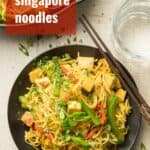
I love this recipe! We make it often! I've accidentally made it without the ginger and garlic and I actually prefer it that way. The ginger and garlic mask the flavor of the curry powder in my opinion. But both versions are terrific! It's also very easy to adapt. We use linguine noodles and whatever veggies we have on hand.
This was really tasty and easy to make. I loved the way the noodles became yellow!
I made this last night and wanted to say how much my husband and I enjoyed it. I doubled the sauce (we like a lot of it) and I used a ton of veggies: broccoli, yellow pepper & mushroom. Oh, and I didn't use the sriracha because we didn't have any and we are both wusses when it comes to spicy food lol.
THANK YOU!!
I have been eating this dish since the 1980's after I was introduced to it by a Korean friend. She said it was what her mother used to make for them after school as a quick meal. When I first started eating this, the siracha/hot pepper craze had not hit, so I much prefer it without the overwhelming taste of them. The curry is heat enough.
Singapore noodles... I'm guessing you mean Mei fun noodles. Back when China became communist in 1949 many of the residents of the mainland fled to nearby lands including Indonesia, Malaysia and Singapore. These places have a significant population of Chinese immigrants. Singapore has several main languages English, Mandarin(Chinese), Maylay, and Tamil. Mei fun is translated from Chinese (I belive Cantonese) as rice noodles. The addition of curry is specific to the Asia pacific region.
I've made Singapore noodles many times... this recipe is good minus the sauce, way too much curry to where it overpowers all the other flavors in the dish.